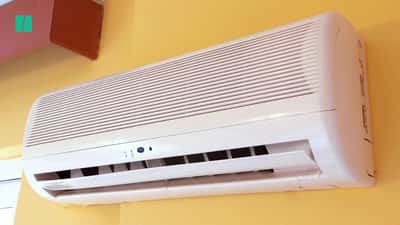To prevent condensate drain line clogs in your air conditioner, you can take the following preventive measures:
- Regular maintenance: Schedule regular maintenance for your air conditioning system. A professional HVAC technician can inspect the unit, clean the condensate drain line, and ensure that all components are in proper working condition. Regular maintenance helps identify and address potential issues before they become major problems.
- Clean or replace air filters: Dirty or clogged air filters can restrict airflow and contribute to condensation buildup. Clean or replace the air filters according to the manufacturer’s recommendations or more frequently if needed. This helps maintain proper airflow and reduces the chances of clogging.
- Clear obstructions: Ensure that the area around the air conditioner’s indoor unit is free from any obstructions. Keep furniture, curtains, and other objects away from the unit to allow proper airflow and prevent debris from entering the system.
- Inspect and clean the drain line: Regularly inspect the condensate drain line for any signs of blockage or buildup. If you notice any debris or algae growth, clean the drain line using a mixture of bleach and water. Pour the solution into the drain line to clear any obstructions and inhibit the growth of mold and algae.
- Ensure proper installation: During installation, ensure that the air conditioner is properly leveled. An uneven unit can cause water to collect and lead to clogs in the drain line. Additionally, ensure that the condensate drain line is correctly connected and has a proper slope for drainage.
- Use a condensate drain line cleaner: Periodically using a condensate drain line cleaner can help prevent clogs. These cleaners are designed to remove buildup, debris, and algae from the drain line, keeping it clear and preventing clogs from forming.
- Install a condensate drain line trap or float switch: A condensate drain line trap can help prevent debris and sediment from entering the drain line. It acts as a barrier, allowing water to flow while capturing solid particles. Similarly, a float switch can be installed to detect when the drain pan is reaching capacity and automatically shut off the air conditioner to prevent overflow.
- Control indoor humidity: High humidity levels can contribute to excessive condensation and potential drain line clogs. Use a dehumidifier in areas where humidity is a concern, such as basements or humid climates. Controlling indoor humidity levels can reduce the strain on the air conditioner and minimize the likelihood of clogs.
By implementing these preventive measures, you can reduce the risk of condensate drain line clogs and ensure the proper functioning of your air conditioning system. However, if you encounter persistent clogging issues or are unsure about any maintenance procedures, it’s recommended to consult a professional HVAC technician for assistance
SHARE
